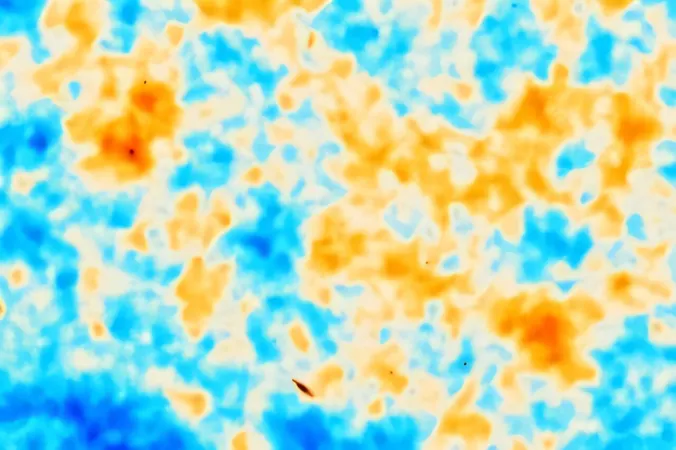
Groundbreaking 'Baby Pictures' of the Universe Shed Light on Cosmic Origins!
2025-04-03
Author: Wei Ling
Groundbreaking 'Baby Pictures' of the Universe Shed Light on Cosmic Origins!
The Atacama Cosmology Telescope (ACT) collaboration has achieved a remarkable breakthrough by capturing the clearest images to date of the universe at a mere 380,000 years old—an astonishing leap back in time that reveals the infant state of our cosmos! Researchers from prestigious institutions, including the University of Toronto, have crafted these images by measuring light that has traveled almost 14 billion years to reach high-altitude telescopes nestled in the Chilean Andes.
Imagine these images as equivalent to hours-old baby pictures of a middle-aged adult, offering a tantalizing glimpse into a time before stars and galaxies took form. Describing the significance of these findings, Adam Hincks, an assistant professor at the University of Toronto’s David A. Dunlap Department of Astronomy and Astrophysics, expressed, "We're staring into the very foundations of the universe, where space was filled with a uniform mixture of hydrogen, helium, radiation, and dark matter."
The first image reveals tiny density fluctuations in primordial gas—these minuscule variations served as the building blocks for the stars and galaxies we see today. The second image unveils the dynamical behavior of this gas through maps of its velocity, acquired by measuring the polarization of the cosmic microwave background (CMB). This unprecedented sensitivity allows the ACT to deliver deeper insights into the intricate dance of cosmic elements than ever before!
A high-resolution update
This new set of images boasts a resolution five times greater and three times lower noise than the previous industry-standard images produced by the Planck mission—a testament to the cutting-edge capabilities of ACT. Richard Bond, a University Professor from the Canadian Institute for Theoretical Astrophysics, remarked, "This is the most impressive work in terms of both data volume and the vastness of sky covered."
Awaiting peer review
While the work is awaiting peer review, it has already stirred excitement within the scientific community. The ACT team has submitted their findings for publication in the Journal of Cosmology and Astroparticle Physics, revealing a universe that adheres closely to a simple cosmological model, effectively ruling out many competing theories.
What does this mean for our understanding of the cosmos?
The implications of these discoveries reach far beyond mere imagery. With renewed confidence in the behaviors of early cosmic structures, researchers can better estimate the quantity of atomic and dark matter in the universe. Additionally, it aids in resolving the "Hubble Tension," a longstanding discrepancy concerning the rate of the universe's expansion—an aspect crucial for understanding the framework of modern cosmology.
The ACT collaboration has led to a confirmation that the universe is approximately 13.8 billion years old, with a tiny margin of error of only 0.1%. Furthermore, their data corroborate a lower Hubble constant (67 to 68 kilometers per second per megaparsec) as the more accurate measure compared to other methods that suggest higher rates.
The Future of Cosmic Exploration
As the ACT reaches the end of its operational life, all eyes now set on the newly inaugurated Simons Observatory, poised to continue these cosmic explorations. The ACT's groundbreaking work ensures an everlasting legacy, paving the way for future discoveries that will unravel more mysteries of our universe.
Stay tuned as we continue to explore the universe's infancy through the eyes of science!
 Brasil (PT)
Brasil (PT)
 Canada (EN)
Canada (EN)
 Chile (ES)
Chile (ES)
 Česko (CS)
Česko (CS)
 대한민국 (KO)
대한민국 (KO)
 España (ES)
España (ES)
 France (FR)
France (FR)
 Hong Kong (EN)
Hong Kong (EN)
 Italia (IT)
Italia (IT)
 日本 (JA)
日本 (JA)
 Magyarország (HU)
Magyarország (HU)
 Norge (NO)
Norge (NO)
 Polska (PL)
Polska (PL)
 Schweiz (DE)
Schweiz (DE)
 Singapore (EN)
Singapore (EN)
 Sverige (SV)
Sverige (SV)
 Suomi (FI)
Suomi (FI)
 Türkiye (TR)
Türkiye (TR)
 الإمارات العربية المتحدة (AR)
الإمارات العربية المتحدة (AR)